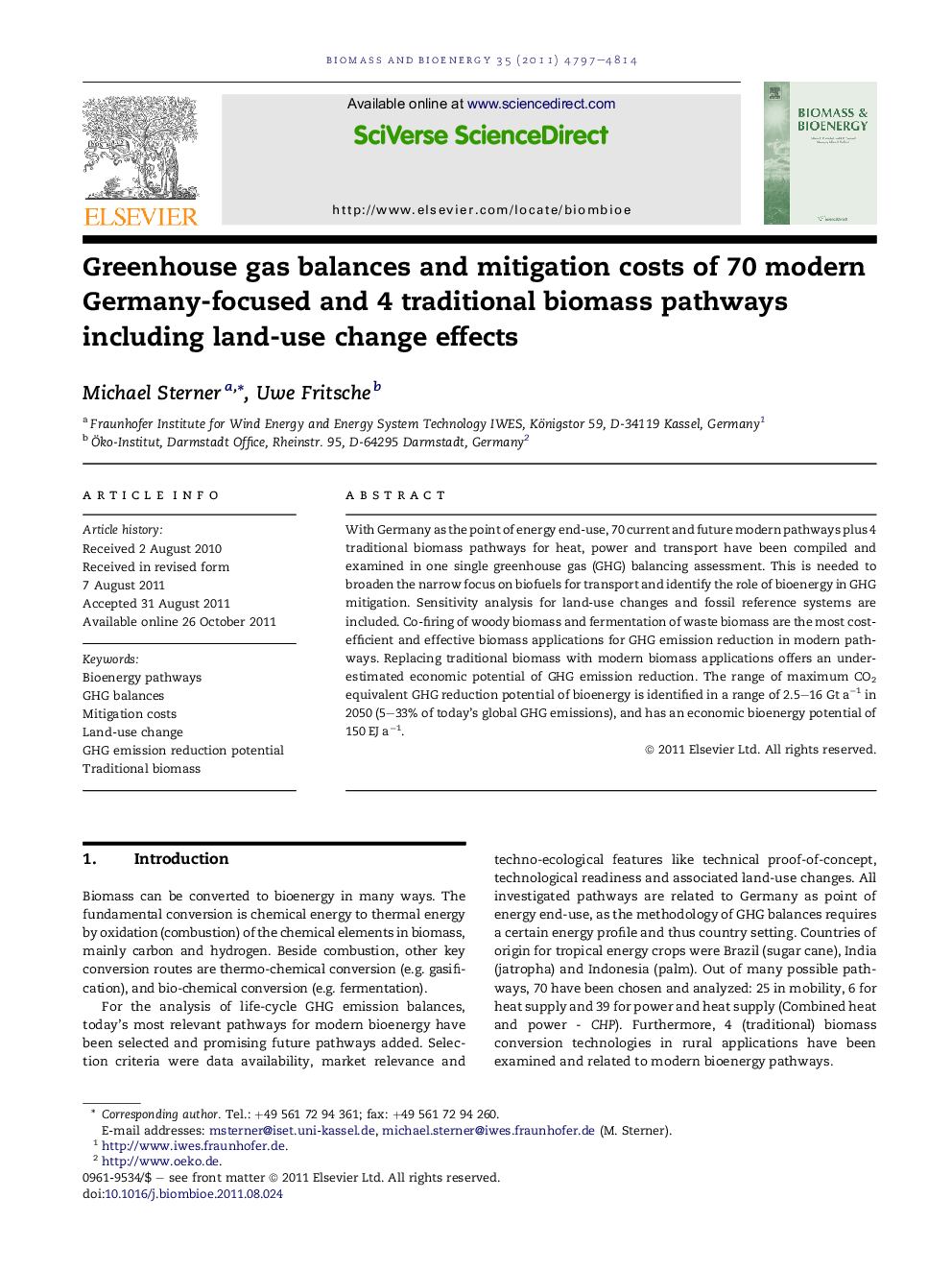| Article ID | Journal | Published Year | Pages | File Type |
|---|---|---|---|---|
| 10393754 | Biomass and Bioenergy | 2011 | 18 Pages |
Abstract
With Germany as the point of energy end-use, 70 current and future modern pathways plus 4 traditional biomass pathways for heat, power and transport have been compiled and examined in one single greenhouse gas (GHG) balancing assessment. This is needed to broaden the narrow focus on biofuels for transport and identify the role of bioenergy in GHG mitigation. Sensitivity analysis for land-use changes and fossil reference systems are included. Co-firing of woody biomass and fermentation of waste biomass are the most cost-efficient and effective biomass applications for GHG emission reduction in modern pathways. Replacing traditional biomass with modern biomass applications offers an underestimated economic potential of GHG emission reduction. The range of maximum CO2 equivalent GHG reduction potential of bioenergy is identified in a range of 2.5-16 Gt aâ1 in 2050 (5-33% of today's global GHG emissions), and has an economic bioenergy potential of 150 EJ aâ1.
Keywords
Related Topics
Physical Sciences and Engineering
Chemical Engineering
Process Chemistry and Technology
Authors
Michael Sterner, Uwe Fritsche,
